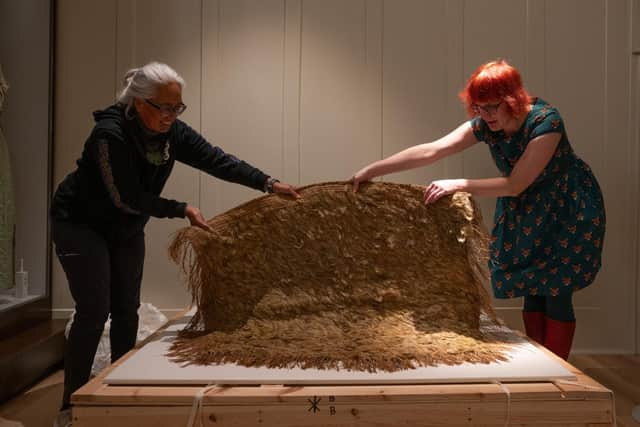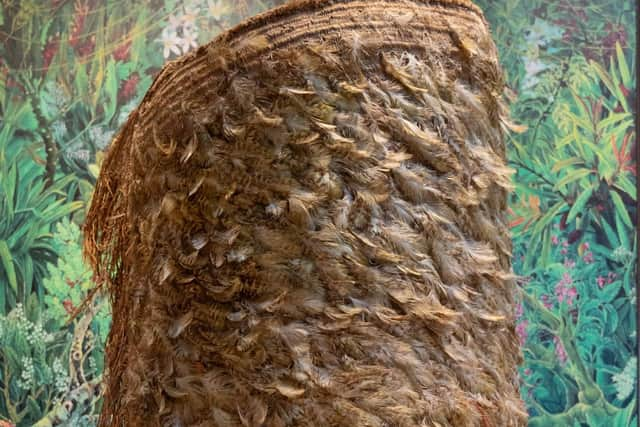Dawn ceremony held in Scottish city to bless Māori cloak made of parrot feathers
A dawn ceremony has been held to bless a Māori cloak made of rare parrot feathers – the only type left remaining in the world – which will go on show at the new Perth Museum.
Members of the Māori community from Scotland and New Zealand gathered in the early hours of Tuesday morning for the ceremony, which began outside the museum and then moved into the collection room where the cloak will go on show.
Advertisement
Hide AdAdvertisement
Hide AdTwo rocks brought from New Zealand chosen for their historical relevance and spiritual essence were at the heart of the ceremony to bless the cloak in its new home. Prayers were said and songs sung.


Te Kenehi T’eira, leader of the Ngabi Rawkawa tribe, which is based north of Wellington, said: “It was a dawn ceremony and when we want to gain protection, that transition from the night to the day is the time that is most powerful.
“We went through a number of prayers and incantations and I think there was a great sense of connection. We as humans protect the artefacts and they in turn protect us. I think people felt absolute reverence.”
On seeing the cloak in Perth, he added: “It makes me proud. The cloak is like an ambassador of our country, here in this land, which is part of us too. There is a huge connection.
"We would like to take it home one day and put it on show in an exhibition but it belongs here and this is its home. “You have to be able to look after it and Perth has shown us from the beginning that it can do this.


The cloak is made from the feathers of the kākāpō , a flightless bird with striking green feathers and mysterious nocturnal habits which is held in great cultural and spiritual value for Māori people.
It was brought to Perth by David Ramsay, a doctor from the city who sailed to Australia as a ship’s surgeon, settling there in 1823. He donated his collection to the Perth Literary and Antiquarian Society in 1842.
The cloak has undergone significant conservation work at the British Museum as part of a collaboration with Anna Zwagerman, conservation officer at Culture Perth and Kinross and the Museum of New Zealand Te Papa Tongarewa (Te Papa). Members of Ngāti Rānana London Māori Club and the New Zealand Society Scotland have also contributed to the storytelling and interpretation of the cloak, which would have been worn at times of high ceremony.
Advertisement
Hide AdAdvertisement
Hide AdHelen Smout, chief executive of Culture Perth and Kinross, said the cloak and other items in the World Cultures gallery would be displayed as part of a “post-colonial conversation”.
She said: “To give the cloak in its new home the blessing that is still culturally significant is really exciting and to do it at dawn makes it really special.”
Ms Smout said members of the Maori community had been working in the museum on the interpretation of the object.
"It is their voices and their history being told in their way.”
Comments
Want to join the conversation? Please or to comment on this article.
